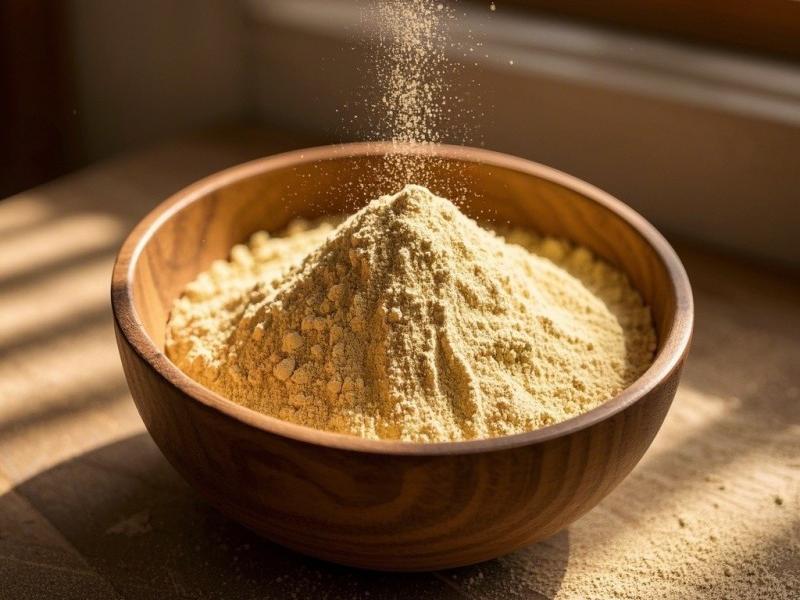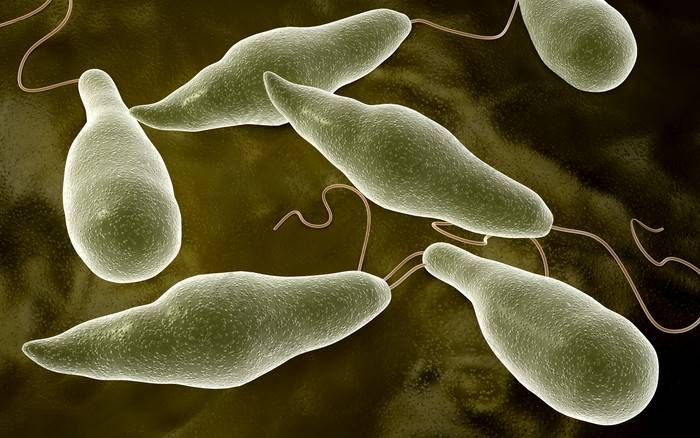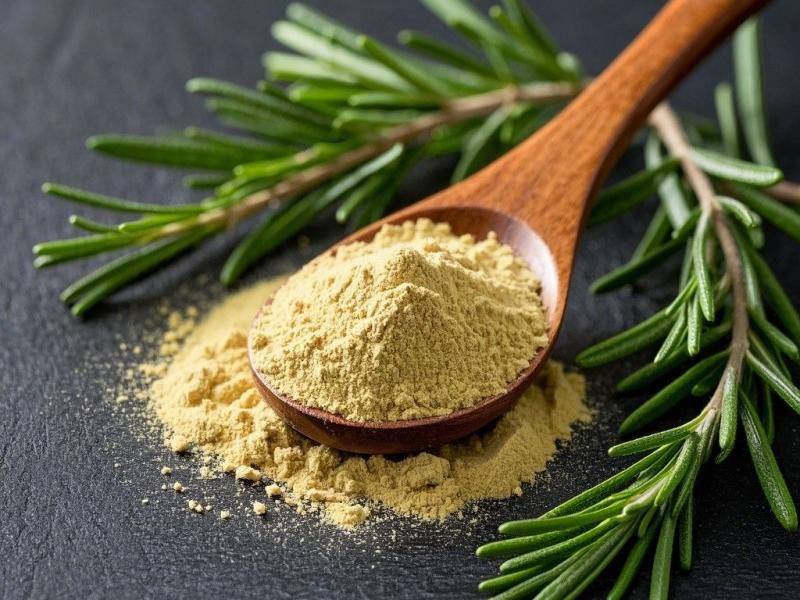What Is Rosemary Extract Carnosic Acid?
Rosemary (Rosmarinus officinalis L.) is a perennial herb in the family Lamiaceae, native to France, Spain, Italy and other countries, and now cultivated in large areas of China, including Hunan, Hainan, Yunnan, Guizhou and Guangxi [1-2]. Rosemary is rich in various bioactive compounds such as flavonoids, volatile oils, polyphenols, and terpenes, and has antibacterial, antioxidant, anti-inflammatory, immunomodulatory, antitumor, lipid-regulating, liver-protecting, sedative, and stomach-strengthening effects [3-4]. In particular, rosmarinic acid and carnosic acid in rosemary have strong antibacterial and antioxidant activities [5].
In recent years, with the development of the economy and society, people have attached increasing importance to food safety. Against the backdrop of the significant side effects of chemical preservatives and the gradual increase in bacterial resistance caused by the abuse of antibiotics, the antimicrobial potential of rosemary and its extracts has attracted much attention. The author has reviewed the antibacterial activity, mechanism of action and research progress of rosemary and its extracts, with a view to providing a reference for the further development and utilization of rosemary resources.
1 Inhibition of bacteria by rosemary extract and its active ingredients
1.1 Rosemary extract
Rosemary extract has an inhibitory effect on a variety of bacteria, including the Gram-negative bacterium Escherichia coli and the Gram-positive bacterium Staphylococcus aureus. Sacco et al. [6] studied the antibacterial effects of three types of rosemary ethanol extract (E-YL, E-ML and E-F) on the gram-negative bacteria E. coli and Pseudomonas aeruginosa and the gram-positive bacteria S. epidermidis and S. aureus. The results of the inhibition zone indicate that gram-positive bacteria are more sensitive to rosemary extract, with the largest inhibition zone for S. epidermidis. The minimum bactericidal concentration (MBC) value shows that the three types of rosemary ethanol extract have a strong bacteriostatic effect on E. coli, with an MBC of <70 μg/mL, while the bacteriostatic effect on P. aeruginosa is poor, MBC was 200 μg/mL, and it is speculated that its antibacterial effect may be related to the content of non-volatile terpenes in rosemary extract.
Rosemary extract can effectively control oral microbial infections and inhibit the growth of oral microbial Porphyromonas gingivalis. Its antibacterial effect is related to the various phenolic components rich in rosemary extract [7-9]. Research by De Oliveira et al. [10] showed that rosemary extract can inhibit the growth of S. aureus, Enterococcus faecalis, Streptococcus mutans and P. aeruginosa. Studies have shown that rosemary extract has varying degrees of inhibitory effects on several common food-contaminating microorganisms, such as S. aureus, E. coli, Salmonella, and Bacillus subtilis [11-12]. Zhang et al. [13] studied the antimicrobial and preservative effects of rosemary and clove 2 spices extract and its mixed extract on the antibacterial and preservation effect of raw chicken stored at 4 ℃ for 15 d. The results showed that rosemary extract can significantly reduce the total viable count (TVC) of chicken and the number of Enterobacteriaceae bacteria.

1.2 Rosemary essential oil
Rosemary essential oil (Rosmarinus officinalis, REO) is a volatile oil compound extracted from rosemary, also known as rosemary volatile oil, which contains 54% total alcohol compounds and less than 1% aldehyde compounds [14]. Liu Qian et al. [15] tested the in vitro antibacterial effect of rosemary essential oil through a drug sensitivity test. The results showed that rosemary essential oil significantly inhibited the growth of S. aureus, E. coli, and Streptococcus, with inhibition zones of (12.6±1.2), (12.4±2.4), (11.5±0.5) mm (Table 1), and the results of animal experiments showed that continuous inhalation of rosemary essential oil for one week can inhibit the colonization of S. aureus in a mouse pneumonia model and alleviate the symptoms of pneumonia in mice infected with S. aureus. Jia Jia et al. [16] investigated the antibacterial effects of rosemary and cinnamon essential oils, both alone and in combination. The results showed that rosemary essential oil had good antibacterial activity against S. epidermidis, S. aureus, B. subtilis, E. coli, and proteus species, except for its weak antibacterial activity against P. aeruginosa. The range of Minimum Inhibitory Concentration (MIC) is 1.25–2.5 mL/L, and the range of MBC value is 2.5–5 mL/L (Table 1).
Some studies have also shown that rosemary essential oil has a strong antibacterial effect on S. aureus, E. coli, B. subtilis, Salmonella paratyphi B, all of which have a strong bacteriostatic effect. The bacteriostatic effect is related to 1,8-cineole in the essential oil [17-18]. Ostrand et al. [19] studied the effect of rosemary essential oil at different concentrations on the common fish pathogens Flavobacterium psychrophilum, Yersinia ruckeri, Aeromonas salmonicida, Aeromonas hydrophila, Edwardsiella ictaluri and Edwardsiella tarda. The results showed that different concentrations of rosemary essential oil have an inhibitory effect on several pathogenic bacteria, but rosemary essential oil at concentrations above 50% has a better effect on most of the test pathogenic bacteria, especially on the inhibition of Psychrobacter cryovorans. The above studies all indicate that rosemary essential oil has a broad range of antibacterial activities.

1.3 Rosmarinic acid
Rosmarinic acid (RA) is a phenolic acid compound isolated from rosemary. Sun et al. [23] used the plate growth inhibition method to study the antibacterial activity of RA, and the results showed that RA could inhibit the growth of E. coli and S. aureus, and the inhibitory effect on S. aureus was better. Guo et al. [24] showed that RA and 3,3-diethoxyrosmanol have strong antibacterial activity against S. aureus and E. coli. The antibacterial diameter of 1 mg/mL RA against S. aureus and E. coli is 30 and 32 mm, respectively, and the antibacterial diameter of 1 mg/mL 3,3-diethoxyrosmanol against S. aureus and E. coli is 28 and 30 mm, respectively. Li Zhaoting et al. [25] showed that RA concentrations of 20% and above significantly reduced the total colony count and the most probable number (MPN) of coliforms.
The combination of RA and antibiotics can produce a synergistic effect, which can enhance the sensitivity of drug-resistant bacteria to antibiotics. Ekambaram et al. [26] studied the antibacterial activity and synergistic effect of RA and standard antibiotics against S. aureus and methicillin-resistant Staphylococcus aureus (MRSA). The results showed that RA can inhibit the growth of S. aureus and MRSA, with MICs of 0.8 and 10.0 mg/mL, respectively. The bacteriostatic activity of RA against S. aureus and MRSA may be related to its inhibition of the expression of the major virulence factor in the bacterial surface membrane protein, the MSCRAMM protein. RA has a synergistic effect with vancomycin, ofloxacin and amoxicillin against S. aureus, and a synergistic effect with vancomycin against MRSA. Suriyarak et al. [27] studied the antibacterial activity and mechanism of action of RA and rosemary dodecyl ester (RE12) against Staphylococcus hyicus LTH1502 and found that the activity of RA is strongly dependent on the pH of the environment, the type and concentration of salt ions, while RE12, which has been esterified, is less sensitive to the pH and salt concentration of the environment.

1.4 Carnosic acid
Carnosic acid (CA) is a phenolic diterpene compound found in plants such as rosemary [28]. Studies have shown that rosemary extracts containing different concentrations of CA can inhibit the growth of Listeria monocytogenes. Pavić et al. [29] showed that CA has a bacteriostatic effect on E. coli, P. aeruginosa, B. subtilis, and S. aureus. Yuan et al. [30] obtained CA with a purity of 98.6% by isolation and purification. The MIC value for different isolated strains of MRSA was 8–16 μg/mL, and the MBC value was 32 μg/mL. It had a synergistic effect when combined with benzylpenicillin sodium or ampicillin sodium, and the bacteriostatic activity against MRSA is increased. The research of Vázquez et al. [31] shows that CA can inhibit the growth of MRSA, and when combined with gentamicin, the MIC value can be reduced by 75% to 80%, and the killing ability against gentamicin-resistant MRSA strains is increased by 32 to 40 times. Xia Tianjuan et al. [28] showed that the antibacterial activity of CA against E. coli and P. aeruginosa was superior to that of neomycin, ampicillin sodium and erythromycin, with MICs of 4 and <2 μg/mL, respectively. The antibacterial effect of CA against Klebsiella pneumoniae was superior to that of neomycin and ampicillin sodium and comparable to that of erythromycin.
2 Rosemary extract and its active ingredients inhibit fungi
Sacchetti et al. [32] studied the antibacterial activity of REO against Candida albicans and several yeasts, and showed that the MIC values of REO against C. albicans, Rhodotorula glutinis, Saccharomyces cerevisiae, Schizosaccharomyces pombe, Yarrowia lipolytica, the MIC values were 90, 120, 60, 180, 120 μg/mL, respectively. Jiang et al. [21] showed that the MIC value of REO against Aspergillus niger was 10 mL/L, and the minimal fungicidal concentration (MFC) was >4%. The MIC value for C. albicans was 1 mL/L, and the MFC value was 0.5%.
Liu Zhaoming et al. [17] extracted rosemary essential oil by steam distillation and studied its inhibitory effect on A. niger, Aspergillus flavus and Penicillium citrinum. The antibacterial effect was in order of strength: A. niger > P. citrinum > A. flavus. Xu Yan et al. [11] showed that rosemary alcohol extract and rosemary essential oil had an inhibitory effect on A. niger, C. albican, Penicillium funiculosum, Mucor, Botrytis cinerea, and Candida albicans (Table 2). Rosemary also has an inhibitory effect on plant pathogenic fungi. Studies have shown that rosemary ethanol extract and rosemary essential oil have high antibacterial activity against plant pathogenic fungi such as rice blast fungus, cucumber wilt fungus, and tomato downy mildew fungus [34-35] .

3 Antiviral effects of rosemary extract and its active ingredients
In addition to its ability to inhibit bacteria and fungi, rosemary also has a certain inhibitory effect on viruses. Dubois et al. [36] showed that RA reacts with nitrite ions under acidic conditions to form two compounds: 6–nitro–rosmarinic acid and 6',6–dinitro–rosmarinic acid, which can inhibit the integrase activity of human immunodeficiency virus HIV-1 and thus inhibit the replication of HIV-1 in MT-4 cells. The nitration of rosmarinic acid greatly enhances its inhibition of HIV integrase, thereby enhancing its antiviral activity against HIV without increasing its cytotoxicity to cells.
Reichling et al. [37] showed that rosemary 20% ethanol extract and rosemary 80% ethanol extract both exhibited high levels of antiviral activity against both acyclovir-sensitive and acyclovir-resistant herpes simplex virus type 1 (HSV-1). Swarup et al. [38] showed that RA can reduce mortality in mice infected with Japanese encephalitis virus (JEV). 8–9 d after infection, a significant reduction in viral load and pro-inflammatory cytokine levels was observed in JEV-infected animals treated with RA compared to untreated infected mice.
4 Bacteriostatic mechanism of rosemary extract and its active ingredients
4.1 Destroying the cell structure of microorganisms
Rosemary and its active ingredients can directly act on the bacterial cell membrane/cell wall, causing the bacterial cell wall to rupture, resulting in cell leakage and a bacteriostatic effect. Ojeda-sana et al. [39] found that REO has an inhibitory effect on Escherichia coli, and that the mechanism is that 1,8–cineole in rosemary essential oil damages the cell membrane of Escherichia coli. 1,8–cineole damages the cell membrane of Escherichia coli at ½ MIC (4 mL/mL).
Da Silva Bomfim et al. [40] showed that REO can inhibit the growth of Fusarium verticillioides (Sacc.) Nirenberg, with MIC and MFC both being 150 mg/mL. When the concentration of REO is 150 mg/mL, significantly reduced the growth rate of F. verticillioides mycelium; when the REO concentration was 300 mg/mL, it caused the cell wall of F. verticillioides to rupture and the cytoplasm to leak. Bais et al. [41] used confocal scanning imaging technology to study the effect of rosmarinic acid on the mycelium of Aspergillus niger. The results showed that rosemary acid can damage the mycelial skeleton of A. niger, leading to the disintegration of cell spacers and distortion of the cell surface.

4.2 Inhibiting the formation of microbial biofilms
Bacterial biofilms can protect bacterial cells from antibiotics. Some studies have shown that bacterial cells that form biofilms are hundreds or even thousands of times more resistant to antibiotics. Rosemary essential oil can inhibit the formation of bacterial biofilms. Miladi et al. [42] showed that the MIC value of REO against Salmonella enteritidis was 25 mg/mL, and the MBC value was 50 mg/mL. REO can act on the initial stage of Salmonella biofilm formation and inhibit bacterial growth and bacterial adhesion. Chifiriuc et al. [43] showed that nanoparticles coated with REO can strongly inhibit the adhesion ability of C. albicans and Candida tropicalis to the catheter surface and the development of biofilms.
4.3 Regulate the activity of microbial enzymes and interfere with microbial metabolism
L-Asparaginase is an intracellular enzyme of E. coli that can hydrolyze asparagine to aspartic acid and ammonia. Li Mingzhe et al. [44] showed that RA can enter E. coli cells, increase the activity of the intracellular enzyme L-asparaginase, activate the L-asparaginase reaction in E. coli, thereby accelerating the decomposition of asparagine, reducing the raw materials for protein synthesis in E. coli, while also increasing the intracellular ammonia content, causing intracellular metabolic disorders, and ultimately leading to the death of E. coli; and Fe2+ can promote the antibacterial effect of RA. Slobodníková et al. [45] showed that RA can inhibit the formation of S. aureus biofilms, reduce the activity of glucose transferase, and interfere with the normal sugar metabolism process of the bacteria, thereby inhibiting bacterial growth.
5 Conclusion and outlook
Rosemary is widely cultivated in the southern regions of China and has very high medicinal value. RA and CA in rosemary are its main active ingredients. Numerous studies have shown that rosemary extracts and their active ingredients have an inhibitory effect on a variety of bacteria, fungi and viruses. Rosemary extracts and their active ingredients are made from natural plants and can be extracted and processed into new antimicrobial agents. They have the advantages of being low-risk, highly active, non-residue, low-pollution, etc. However, current research on rosemary extract and its active ingredients mainly focuses on food preservation. There is less research on the use of rosemary extract and its active ingredients to prevent and control pathogenic bacteria in livestock and poultry. In the future, the application of rosemary and its active ingredients in livestock and poultry farming should be explored in depth to provide new ideas for the commercial development of rosemary active ingredients.
References:
[1] Bi Liangwu, Li Dawei, Zhao Zhendong, et al. A comprehensive review of the development and utilization of rosemary resources [J]. Biomass Chemical Engineering, 2011, 45(3): 53-56.
[2] Liu Jundan, He Yongming. Pharmacological effects and clinical applications of rosemary in veterinary medicine [J]. Advances in Veterinary Medicine, 2016, 37(6): 110-113.
[3] Ma Hong, Ma Jiayu, Long Shenfei, et al. Effect of rosemary essential oil coating on growth performance, apparent nutrient digestibility, and serum immune and antioxidant indices of weaned piglets [J]. Journal of Animal Nutrition, 2021, 33(12): 6740-6748.
[4] Qi Rui, Dong Yan. Research progress on the chemical composition and pharmacological effects of rosemary [J]. Guangzhou Chemical Industry, 2012, 40(11): 43-44, 66.
[5] DUAN Guangying, PENG Fang, SONG Zehuo, et al. Biological functions of rosemary extract and its application in animal production [J]. Journal of Animal Nutrition, 2020, 32(2): 516-522.
[6] SACCO C, BELLUMORI M, SANTOMAURO F, et al. An in vitro evaluation of the antibacterial activity of the non-volatile phenolic fraction from rosemary leaves [J]. Natural Product Research, 2015, 29(16): 1537-1544.
[7] Hu Surong. Extraction of natural active ingredients from rosemary and study of their antibacterial effects [D]. Huhehaote: Inner Mongolia Agricultural University, 2017.
[8]VELOSO D J ,ABRÃO F ,MARTINS C H G ,et al. Potential antibacterial and anti-halitosis activity of medicinal plants against oral bacteria[J]. Archives of Oral Biology ,2020 ,110 :104585.
[9]BERNARDES W A ,LUCARINI R ,TOZATTI M G ,et al. Antimicrobial activity of Rosmarinus officinalis against oral pathogens :relevance of carnosic acid and carnosol[J]. Chemistry & Biodiversity ,2010 ,7(7 ):1835-1840.
[10]DE OLIVEIRA J R ,DE JESUS D ,FIGUEIRA L W ,et al. Biological activities of Rosmarinus officinalis L.(rosemary )extract as analyzed in microorganisms and cells[J]. Experimental Biology and Medicine ,2017 ,242(6 ):625-634.
[11] Xu Yan, Huang Jinghua. Extraction method of natural preservatives from rosemary and its antibacterial effect [J]. Amino Acids and Biological Resources, 2007, 29(2): 1-4.
[12] LI X, WANG S Y, DING X, et al. Study on the antibacterial and hemostatic effects of chitosan/rosemary porous dry gel [J]. Journal of Changchun University of Science and Technology (Natural Science Edition), 2019, 42 (4): 120-124, 128.
[13] ZHANG H Y, WU J J, GUO X Y. Effects of antimicrobial and antioxidant activities of spice extracts on raw chicken meat quality [J]. Food Science and Human Wellness, 2016, 5(1): 39-48.
[14] LI W R, SHI Q S, MO C Y, et al. Chemical composition and antimicrobial activity of essential oils from several typical plants [J]. Microbiology Bulletin, 2013, 40(11): 2128-2137.
[15] Liu Qian, Cao Shuo, Zhang Hao, et al. Intervention effect of rosemary essential oil on Staphylococcus aureus-infected mice [J]. Journal of Beijing Agricultural College, 2019, 34(2): 71-76.
[16] Jia Jia, Wu Yan, Su Lifen, et al. Study on the antibacterial activity of rosemary essential oil and cinnamon essential oil [J]. Heilongjiang Medicine, 2015, 28(1): 8-11.
[17] Liu Zhaoming, Tian Yuhong, Huang Cuiji, et al. Study on the components and antibacterial activity of rosemary essential oil [J]. Anhui Agricultural Science, 2009, 37(2): 654-656.
[18] Dong Yan, Qi Wei, Zhou Lianwen. Chemical composition and antibacterial activity of rosemary volatile oil from Shandong [J]. Chemical Research and Application, 2015, 27(12): 1805-1810.
[19]OSTRAND S L ,GLENN R A ,GANNAM A L ,et al. Inhibitory effects of rosemary oil on the in vitro growth of six common finfish pathogens[J]. North American Journal of Aquaculture,2012,74(2 ): 230-234.
[20] Ren Zhiqing, Li Huizhen, Zhang Zhijun, et al. Extraction of rosmarinic acid from different varieties of perilla leaves and its biological activity [J]. Modern Food Science and Technology, 2021, 37(1): 92-100.
[21]JIANG Y ,WU N ,FU Y J ,et al . Chemical composition and antimicrobial activity of the essential oil of Rosemary[J] . Environmental Toxicology and Pharmacology ,2011 ,32( 1 ):63- 68.
[22] Wu Kegang, Luo Minting, Wei Hao. Study on the antibacterial effect of 8 kinds of plant essential oils on common intestinal microorganisms in vitro [J]. Modern Food Science and Technology, 2017, 33(6): 133-141, 93.
[23] Sun Xun, Wang Jingchao, Li Hongtao, et al. Research on the antibacterial mechanism of rosmarinic acid [J]. Journal of Qingdao University (Natural Science Edition), 2005, 18(4): 41-45.
[24] Guo Qunqun, Du Guicai, Li Ronggui, et al. Research on the antibacterial active ingredients of perilla [J]. Journal of Chemical Research in Colleges and Universities, 2006, 27(7): 1292-1294.
[25] Li Zhaoting, Lin Tao, Shen Jixue, et al. Effect of rosemary on the antibacterial and preservation of chilled meat [J]. Food Research and Development, 2017, 38(21): 181-186.
[26]EKAMBARAM S P ,PERUMAL S S ,BALAKRISHNAN A ,et al. Antibacterial synergy between rosmarinic acid and antibiotics against methicillin-resistant Staphylococcus aureus [J]. Journal of Intercultural Ethnopharmacology ,2016 ,5(4 ):358-363.
[27]SURIYARAK S ,GIBIS M ,SCHMIDT H ,et al. Antimicrobial mechanism and activity of dodec yl rosmarinate against Staphylococcus carnosus LTH1502 as influenced by addition of salt and change in pH[J]. Journal of Food Protection ,2014 ,77(3 ): 444-452.
[28] Xia Tianjuan, Bi Liangwu, Zhao Zhendong, et al. Study on the antioxidant and antibacterial activities of salvianic acid [J]. Natural Product Research and Development, 2015, 27(1): 35-40.
[29]PAVIĆ V ,JAKOVLJEVIĆ M ,MOLNAR M ,et al. Extraction of carnosic acid and carnosol from sage(Salvia officinalis L. )leaves by supercritical fluid extraction and their antioxidant and antibacterial activity[J]. Plants ,2019 ,8( 1 ):16.
[30] Yuan Ganjun, Li Peibo, Yang Hui. Study on the anti-MRSA activity of carnosic acid in rosemary [J]. Chinese Journal of Modern Applied Pharmacy, 2012, 29(7): 571-574.
[31]VÁZQUEZ N M ,FIORILLI G ,CÁCERES GUIDO P A ,et al. Carnosic acid acts synergistically with gentamicin in killing methicillin-resistant Staphylococcus aureus clinical isolates[J] . Phytomedicine ,2016 ,23( 12 ):1337-1343.
[32]SACCHETTI G ,MAIETTI S ,MUZZOLI M ,et al. Comparative evaluation of 11 essential oils of different origin as functional antioxidants ,antiradicals and antimicrobials in foods[J] . Food Chemistry ,2005 ,91(4 ):621-632.
[33] Chai Mengying, Jiao Lei. Study on the antifungal activity of 15 kinds of Chinese herbal medicine extracts [J]. Journal of Agricultural Products Processing (Journal), 2012 (5): 61-64.
[34] Yao Xuyin, Qiao Zhewen, Shan Xichen, et al. Research on the anti-plant pathogenic bacteria activity of rosemary [J]. Journal of Qiqihar University (Natural Science Edition), 2012, 28(1): 61-62, 71.
[35] Zhao J, Ni XH. Study on the antibacterial activity of rosemary essential oil against several plant pathogenic bacteria [J]. Northern Horticulture, 2009(9): 33-35.
[36]DUBOIS M ,BAILLY F ,MBEMBA G ,et al. Reaction of rosmarinic acid with nitrite ions in acidic conditions :discovery of nitro- and dinitrorosmarinic acids as new anti-HIV-1 agents[J]. Journal of Medicinal Chemistry ,2008 ,51( 8 ):2575-2579.
[37]REICHLING J,NOLKEMPER S ,STINTZING F C ,et al. Impact of ethanolic Lamiaceae extracts on herpesvirus infectivity in cell culture[J]. Forschende Komplementarmedizin(2006 ),2008,15(6 ): 313-320.
[38]SWARUP V ,GHOSH J ,GHOSH S ,et al. Antiviral and anti- inflammatory effects of rosmarinic acid in an experimental murine model of Japanese encephalitis[J] . Antimicrobial Agents and Chemotherapy ,2007 ,51(9 ):3367-3370.
[39]OJEDA-SANA A M ,VAN BAREN C M ,ELECHOSA M A, et al. New insights into antibacterial and antioxidant activities of rosemary essential oils and their main components[J]. Food Control, 2013 ,31( 1 ):189-195.
[40]DA SILVA BOMFIM N ,NAKASSUGI L P ,FAGGION PINHEIRO OLIVEIRA J ,et al. Antifungal activity and inhibition of fumonisin production by Rosmarinus officinalis L. essential oil in Fusarium verticillioides( Sacc. )Nirenberg[J]. Food Chemistry, 2015 ,166 :330-336.
[41]BAIS H P ,WALKER T S ,SCHWEIZER H P ,et al. Root specific elicitation and antimicrobial activity of rosmarinic acid in hairy root cultures of Ocimum basilicum[J]. Plant Physiology and Biochemistry ,2002 ,40( 11 ):983-995.
[42]MILADI H ,MILI D ,BEN SLAMA R ,et al. Antibiofilm formation and anti-adhesive property of three Mediterranean essential oils against a foodborne pathogen Salmonella strain[J]. Microbial Pathogenesis ,2016 ,93 :22-31.
[43]CHIFIRIUC C ,GRUMEZESCU V ,GRUMEZESCU A M ,et al. Hybrid magnetite nanoparticles/Rosmarinus officinalis essential oil nanobiosystem with antibiofilm activity[J]. Nanoscale Research Letters ,2012 ,7( 1 ):209.
[44] Li Mingzhe, Liu Xiaoqian, Shao Nan, et al. Activation of rosemary acid on L-asparaginase of Escherichia coli and the antimicrobial synergistic effect of ferrous ions on rosemary acid [J]. Microbiology Bulletin, 2009, 36(8): 1222-1226.
[45]SLOBODNÍKOVÁ L, FIALOVÁ S, HUPKOVÁ H, et al . Rosmarini c acid interaction with planktonic and bio film Staphylococcus aureus[J]. Natural Product Communications ,2013, 8( 12 ):1747-1750.


 English
English French
French Spanish
Spanish Russian
Russian Korean
Korean Japanese
Japanese






